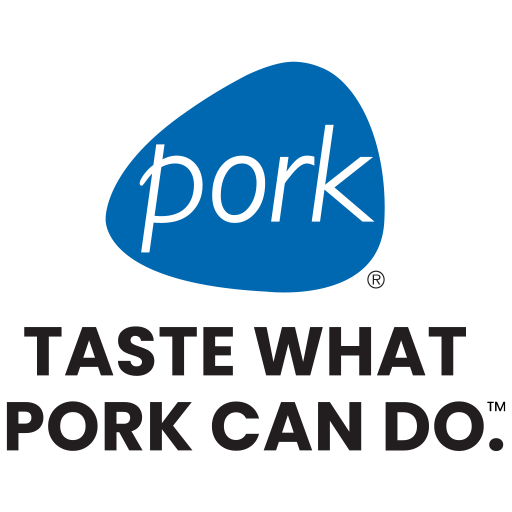Nutrition for Your Baby’s First Bite
Download this page
Helping You Make Every Bite Count at Any Age
Pork Can Be a First Food
Foods in the first year of life set the stage for a lifetime of good health. As a complementary food, the nutrients in pork can help your baby with the important task of growth and development. Pork is packed with protein, vitamins and minerals, making it a nutrient-rich protein choice as a first food for babies.1
Begin the Transition
Around the age of 6 months, infants begin the transition from exclusive breastfeeding or formula feeding to the addition of solid foods.2,3 Experts agree that introducing solid foods at this stage is important because a baby’s storage of some nutrients begin to diminish. This is especially true for iron and zinc levels in breastfed infants. Babies need foods with key nutrients for growth and development to complement breast milk or formula at this stage. These first solid foods are often referred to as complementary foods.
Provide Variety
Introducing a variety of foods allows infants to experience and learn about new textures and tastes as well as enjoy the social experience of eating together. As your baby has an increasing variety of foods, there is no need to prepare different meals. You can introduce your baby to the unique tastes of your family’s favorite pork recipes that reflect your culture and fit your family’s budget.
Make Your Own Puree
When starting your baby with pureed meats, you can easily make your own with the pork you’ve prepared for the family by using a blender or food processor to puree the cooked meat. Add water, formula, or breast milk to thin the meat puree to the appropriate consistency for your baby’s developmental stage. Meat can also be pureed with fruits and vegetables your baby has tolerated well.

Introduce High-Quality Protein
Current recommendations are to introduce meats, like pork, as a first complementary food because they provide high-quality protein, iron, and zinc. Pork can provide babies with a good source of protein, choline and zinc.2 These are important nutrients for brain development, growth, and immune function mentioned in the recent Dietary Guidelines for Americans.5 Pork is also a source of iron, in the form of heme iron which is found in animal proteins.6 Heme iron is absorbed by our bodies at a greater rate when compared with the non-heme iron found in plants.7 Combining pork with plant-based sources of iron can increase the absorption of iron over the whole meal. For example, in your favorite pork chili, the heme iron in ground pork would increase the iron absorbed from the non-heme iron in the beans.
4 Ways to Prepare Pork for Your Baby
- Cook whole pork cuts to a minimum temperature of 145°F followed by a 3-minute rest for safe and tender meat for your infant (6 months of age and older). Avoid overcooking to maintain moisture and tenderness. Meat should be tender enough to easily mash between your thumb and forefinger. Cut tender meat into small pieces no larger than 1/2-inch wide (the size of a dime) or larger pieces for baby to grasp with their palm for baby-led weaning.
- Ground pork can be shaped into meatballs or shapes that an infant (around 6 to 8 months old) can grasp. Maintain a very soft texture by adding more milk or broth to your mixture. Take care to have them soft and small enough to easily mash with their fingers or gums or big enough for a baby to grasp with their palm and bring to their mouth.
- Babies who can grasp food with their fingers (about 9 to 12 months) can be served pulled pork on their high chair tray.
- Babies who are around 9 to 12 months of age can use their fingers or try using a spoon to eat small pieces of ground pork crumbles.

Join the Pork & Partners Community
Join Now1. rwhwewa.alrtsh.ucsdaar.egopv/rAoRvSiUdseerrF.iles/80400535/ Data/Meat/Pork09.pdf
2. U.S. Department of Agriculture, Agricultural Research Service. FoodData Central, 2019. NDB#: 10093.
3. www.dietaryguidelines.gov
4. U.S. Department of Agriculture Nutrient Database Release 18, 2006 Revised USDA Nutrient Data Set for Fresh Pork.
5. https://ods.od.nih.gov/factsheets/Iron-HealthProfessional/

